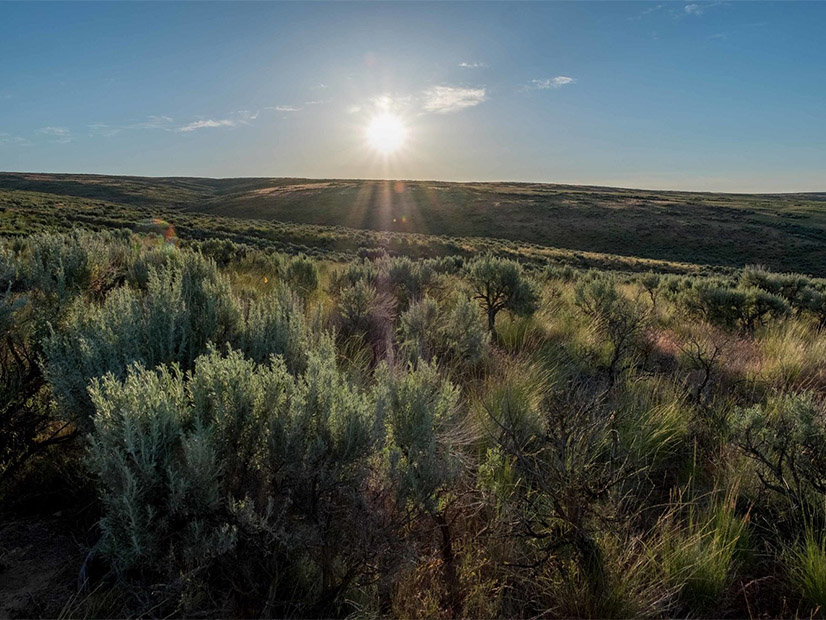
A Washington energy siting council member is requesting a look at the cumulative effect of solar farms on the state’s Yakima River Valley after the agency recently received applications for two new projects in the area.
Yakima County in Central Washington is split west-to-east by the valley, with a U.S. Army training ground covering its north side and the Hanford Nuclear Reservation bumping against the northern half of the county’s east border.
The area is predominantly shrub-steppe, a treeless, sagebrush-filled semi-desert that is home to unique vegetation and animals, including greater sage grouse, which are listed as endangered by the state. Yakima and the surrounding counties are host to many solar proposals.
Shrub-steppe still covers a good chunk of Eastern Washington, but farms and towns have been gobbling up land for more than a century. The shrub-steppe has shrunk from an estimated 10.4 million acres filled with unique birds and critters in the 19th century to 40% of that today.
North Carolina-based Cypress Creek Renewables submitted applications to state’s Energy Facilities Site Evaluation Council (EFSEC) on April 7 to develop two 80 MW solar farms — High Top and Ostrea — near the county’s eastern border, just south of the Army training center.
At least two other solar farms are under consideration. EFSEC is considering whether it will approve the 80 MW Goose Prairie Solar project in the western part of the valley, while the Yakima County government is considering approval of the Black Rock solar farm near Goose Prairie.
Washington has a patchwork approach to approving wind and solar projects, giving renewable energy developers the choice of seeking permits from either the state or host county governments. If a developer chooses the state option, the EFSEC reviews the application and makes recommendations to the governor for a final decision.
During a Tuesday briefing on the High Top and Ostrea projects, EFSEC member Mike Livingston noted that the two projects are on a chunk of land that connects the Army’s Yakima training center and the Hanford reservation, both of which protect shrub-steppe lands within their borders. Livingstone said the four projects are strung along the training center’s southern boundary.
Livingston said solar farms might block unique species such as sage grouse from traveling from one area to the next. “We need a cumulative impact study [on the environmental effects],” he said. “We’re going to lose the connectivity we have in this area.”
Livingston is not the first Washington official to raise a red flag on the potential impact of solar on the state’s shrub-steppe areas. Last September, Department of Fish and Wildlife staff and members of the state’s Habitat Committee expressed concern that solar developers were neglecting to investigate sensitive species and habitat impacts before locking into project development sites. (See Eastern Wash. Solar Projects Endanger Sensitive Habitat.)
Cypress Creek expects construction of the two solar farms to take nine to 18 months. The company has requested an expedited approval process from EFSEC, meaning a public hearing must be conducted by June 6.
Cypress Creek has built roughly 8 GW of solar projects and owns and operates about 1.6 GW of solar across the country, the company’s director of development, Tai Wallace, told the EFSEC. “We’ve developed quite a few projects of this scale.”


